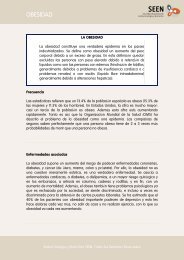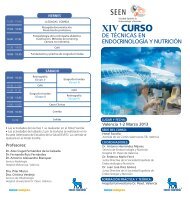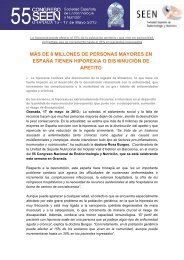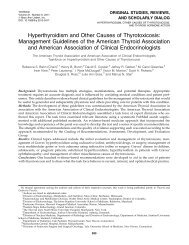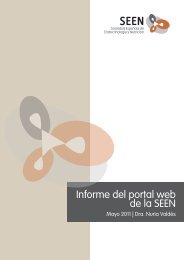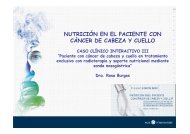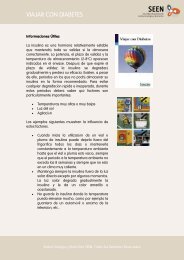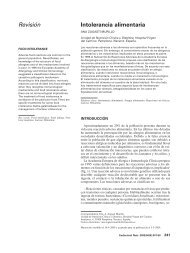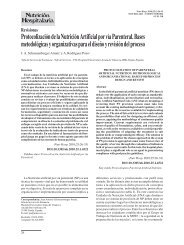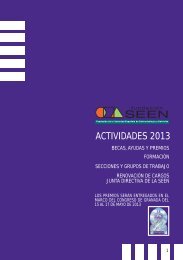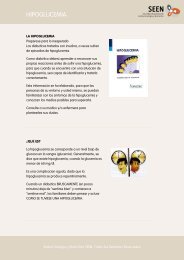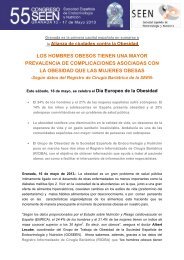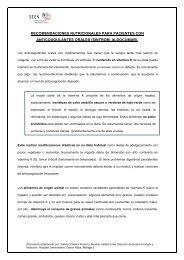Basic Concepts of Fluid and Electrolyte Therapy
Basic Concepts of Fluid and Electrolyte Therapy
Basic Concepts of Fluid and Electrolyte Therapy
You also want an ePaper? Increase the reach of your titles
YUMPU automatically turns print PDFs into web optimized ePapers that Google loves.
<strong>Fluid</strong> balance charts<br />
These provide useful information about changes in urine output <strong>and</strong><br />
abnormal losses, e.g. gastric aspirate, but they have inherent inaccuracies.<br />
With great care in measurement <strong>and</strong> recording, they may be<br />
helpful in assessing balance over 24 hours. However, an assumption<br />
has to be made concerning insensible loss, <strong>and</strong> errors in measurement<br />
<strong>and</strong> recording are common. The cumulative error over several days<br />
can, therefore, be considerable.<br />
Weight<br />
There is no substitute for daily weighing in order to monitor external<br />
water balance accurately, yet outside renal units, it is seldom practised.<br />
As it is a major safeguard against clinically important errors in<br />
fluid volume administration, it is well worth the extra effort <strong>and</strong><br />
resources required, particularly in complex post-operative cases. It<br />
does, <strong>of</strong> course, only measure external balance, which may conceal<br />
significant changes in internal balance between fluid compartments.<br />
For example, in the presence <strong>of</strong> ileus or intestinal obstruction, large<br />
volumes <strong>of</strong> extracellular fluid may be pooled in the gut <strong>and</strong> therefore<br />
be functionally inert. Weight is, therefore, unchanged despite this<br />
clinically important fluid shift, which reduces effective ECF volume<br />
<strong>and</strong> necessitates salt <strong>and</strong> water replacement. Valuable as weighing is,<br />
therefore, it cannot be followed blindly. Like any other parameter, it<br />
requires intelligent interpretation in its clinical context <strong>and</strong> in the<br />
light <strong>of</strong> all the other information available.<br />
Invasive monitoring<br />
Invasive techniques such as insertion <strong>of</strong> central venous catheters,<br />
arterial lines <strong>and</strong> catheters to measure pulmonary artery wedge pressure<br />
are useful to help direct fluid therapy in more complex patients.<br />
34




